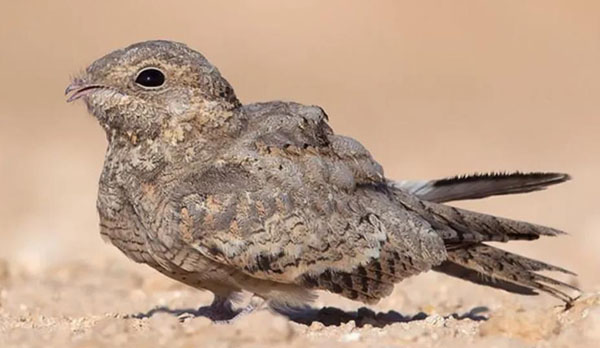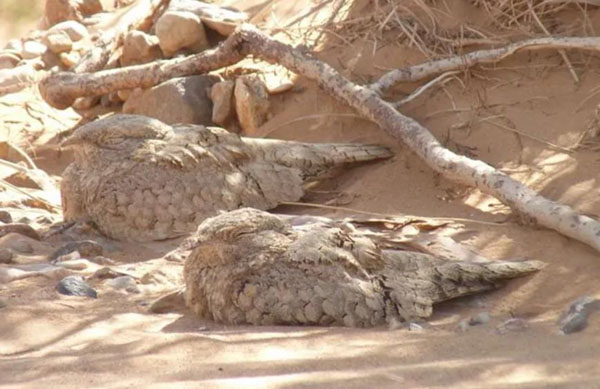Caprimulgus aegyptius
IUCN
LCBasic Information
Scientific classification
- name:Caprimulgus aegyptius
- Scientific Name:Mosquitobird,Caprimulgus aegyptius,Egyptian Nightjar
- Outline:Climbing birds
- Family:nighthawks hawks
Vital signs
- length:24-26cm
- Weight:75-10g
- lifetime:8years
Feature
Nocturnal, phototactic
Distribution and Habitat
In China, it is only found marginally in western Xinjiang. Abroad, it is found from Central Asia to North Africa, migrating south in winter.
The Egyptian Nightjar mainly inhabits dry plains, grasslands, semi-deserts and desert areas with shrubs, especially deserts and semi-desert areas near rivers, lakes and other water bodies.
Appearance
A medium to small light-colored nighthawk. Its body is covered with moth spots like other nighthawks, but its mouth is smaller. Its iris is brown, its beak is horny, and its feet are gray.
Details
The Egyptian Nightjar is a small bird of the family Viperidae and the genus Viper. It looks very similar to the European Nightjar, but its body color is lighter. The upper body is mostly light gray, sandy gray or leathery gray, with less obvious dark spots. The throat is white, and the white spots on the tail are small or absent.

The Egyptian Nightjar mostly lives on the ground in the forest during the day and is active at night. It is phototactic and feeds on insects. During the hunting process, it often goes down to the ground for a short rest.
The Egyptian Nightjar is a nocturnal bird that is active mainly at dusk and night. It rests on the ground or in the shade of bushes during the day. It frequently flies and hunts on the ground or water at dusk. It flies fast and quickly, usually flying close to the ground or water. Its call is monosyllabic and repetitive, and its sound is like "Kre-kre-kre" or "Korr-korr-korr". It mainly feeds on insects and insect larvae. It mainly forages by flying at low altitudes, hunting in flight, and sometimes hunting on the ground or water.

The breeding season of the Egyptian Nightjar is from May to July. Usually, they do not build nests, but lay eggs directly in shallow pits or depressions on the sandy land. Some are directly exposed to the sun without any shelter around them, and some are laid on the ground next to bushes, with the help of bushes to hide. The nest is usually not far from the water. Each nest lays 2 eggs. The eggs are gray-ochre with unclear rust-brown spots. The size of the eggs is 31.3-33.0×21.0-22.9 mm. After the first egg is laid, incubation begins. Incubation is undertaken by both male and female parents. The incubation period is 17-18 days. The chicks mature late. After being fed by the parents for about 30 days, the chicks can fly.








